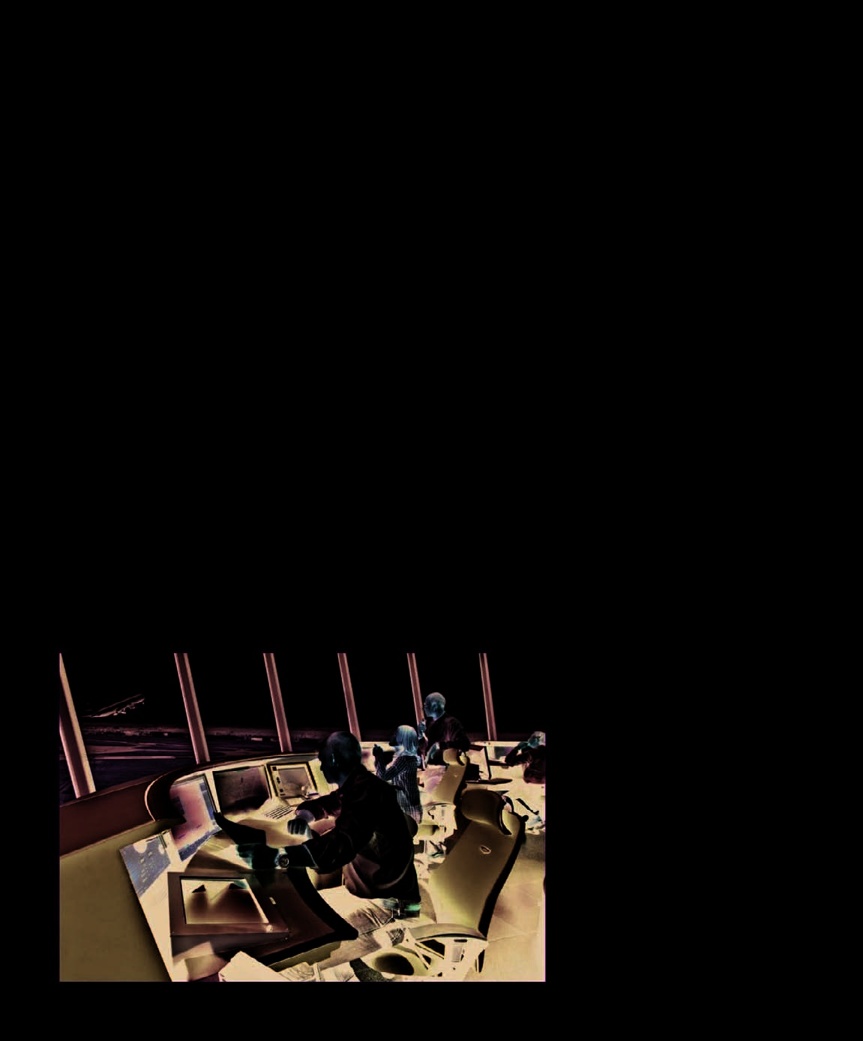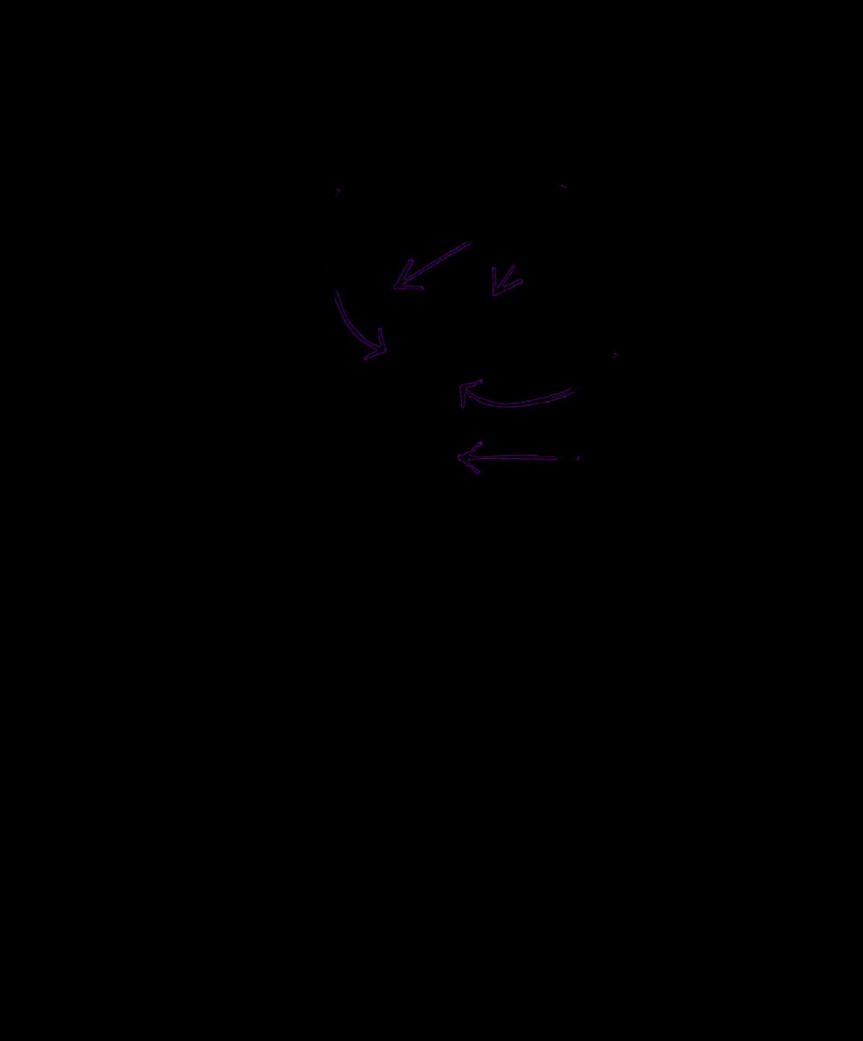The Psychology Book (57 page)
Read The Psychology Book Online
Authors: Unknown

COGNITIVE PSYCHOLOGY 181
See also:
René Descartes 20–21 ■ George Armitage Miller 168–73 ■
Daniel Schacter 208–09 ■ Frederic Bartlett 335–36
Donald Broadbent
Born in Birmingham, England,
Donald Broadbent considered
himself to be Welsh, since he
spent his teenage years
in Wales after his parents’
divorce. He won a scholarship
to the prestigious Winchester
A World War II plane
incorporates a
Broadbent was influenced in his
College, then joined the Royal
dazzling display of informational data;
thinking about how we process
Air Force aged 17, where he
Broadbent was interested in discovering
information by another product of
trained as a pilot and studied
how pilots prioritized information and
wartime research: the development
aeronautical engineering.
what design changes would aid this.
of computers and the idea of
After leaving the RAF in
“artificial intelligence.” The first
1947, he studied psychology
planes, the lever for pulling up the
director of the APU, Kenneth
under Frederic Bartlett at
wheels was identical to the one for
Craik, had left the unit important
Cambridge, then joined the
pulling up the flaps, and the two
manuscripts and flow diagrams
newly founded Applied
were situated together under the
comparing human and artificial
Psychology Unit (APU),
becoming its director in 1958.
seat; this led to frequent accidents.
information processing, which
Married twice, he was a shy,
Broadbent thought these incidents
Broadbent clearly studied.
famously generous man whose
could be avoided if the capacities
At the same time, code breakers
“puritanical streak” led him
and limitations of the pilots were
such as the mathematician Alan
to believe that his work was
taken into consideration during
Turing had been tackling the notion
a privilege and should always
the design process, rather than
of information processing, and in
be of real use. In 1974, he
surfacing at the point of use.
the postwar period he applied this
was awarded the CBE and
Broadbent was interested in
to the idea of a “thinking machine.”
appointed a fellow of Wolfson
using psychology not only to design
The comparison of a machine to
College, Oxford, where he
better equipment, but also to reach
the workings of the brain was a
remained until his retirement
a better understanding of what
powerful analogy, but it was
in 1991. He died two years
affected the pilots’ capabilities.
Broadbent who turned the idea
later of a heart attack, aged 66.
They clearly had to cope with large
around, considering the human
amounts of incoming information,
brain as a kind of information-
Key works
and then had to select the relevant
processing machine. This, in
1958
Perception and
data they needed to make good
essence, is what distinguishes
Communication
decisions. It seemed to him that
cognitive psychology from
1971
Decision and Stress
mistakes were often made when
behaviorism: it is the study of
1993
The Simulation of Human
there were too many sources of
mental processes, rather than their
Intelligence
incoming information.
manifestation in behavior. ❯❯

182 DONALD BROADBENT
To study how our attention works,
use to “filter out” the irrelevant
Broadbent needed to design
information from the masses of
experiments that would back up
data we receive through our senses
his hunches. His background in
all the time. Following the air traffic
engineering meant that he would
control model, he chose to present
not be satisfied until he had
aural (sound-based) information
Our mind can be conceived
evidence on which to base a theory,
through headphones to the subjects
as a radio receiving many
and he also wanted that research
of his experiment. The system was
channels at once.
to have a practical application.
set up so that he could relay two
Donald Broadbent
The APU was dedicated to applied
different streams of information at
psychology, which for Broadbent
the same time—one to the left ear
referred not only to therapeutic
and one to the right—and then test
applications, but also to applications
the subjects on their retention of
that benefited society as a whole;
that information.
he was always very conscious that
As Broadbent had suspected, the
his research was publicly funded.
subjects were unable to reproduce
could only effectively deal with one
all the information from both
One voice at a time
message at a time. What interested
channels of input. His feeling that
One of Broadbent’s most important
him was the mental process that
we can only listen to one voice at
experiments was suggested by his
must take place in order for them to
once had been confirmed, but still
experience with air traffic control.
select the most important message
the question remained as to exactly
Ground crew often had to deal with
from the various sources of incoming
how the subject had chosen to retain
several streams of incoming
information. He felt that there must
some of the incoming information
information simultaneously, sent
be some kind of mechanism in the
and effectively disregard the rest.
from planes arriving and departing,
brain that processes the information
Thinking back to his initial
which was relayed to the operators
and makes that selection.
training as an engineer, Broadbent
by radio and received through
The experiment that Broadbent
suggested a mechanical model to
headphones. The air traffic
devised, now known as the dichotic
explain what he felt was happening
controllers then had to make quick
listening experiment, was one of
in the brain. He believed that when
decisions based on that information,
the first in the field of selective
there are multiple sources of input,
and Broadbent had noticed that they
attention—the process our brains
they may reach a “bottleneck” if the
brain is unable to continue to process
all the incoming information; at this
point, there must be some kind of
“filter” that lets through only one
channel of input. The analogy he
uses to explain this is typically
practical: he describes a Y-shaped
tube, into which two flows of ping
pong balls are channeled. At the
junction of the two branches of the
tube, there is a flap that acts to
block one flow of balls or the other;
this allows balls from the unblocked
channel into the stem of the tube.
Air traffic controllers
have to deal
with a multitude of simultaneous
signals. By re-creating this problem in
listening experiments, Broadbent was
able to identify attention processes.

COGNITIVE PSYCHOLOGY 183
A question still remained, however:
at what stage does this filter come
into operation? In a series of
Our short-term
experiments that were variations
Information from all
memories are like
on his original dichotic listening
the senses is fed in...
a
Y-shaped tube
.
tasks, Broadbent established that
information is received by the
senses and then passed on in
its entirety to some kind of store,
which he called the short-term
memory store. It is at this stage, he
believes, that the filtering occurs.
...which creates a
His description of how and when
“bottleneck”
where
information must be
information is selected for attention
filtered...
is known as the “Broadbent Filter
Model,” and it demonstrated a
completely new approach to
experimental psychology, not only
in combining the theoretical with
the practical, but also in considering
the workings of the brain as a form
...so that only
one
stream
of information processing.
of information
is
processed.
The cocktail party problem
Broadbent was not the only person
to address the problem of selective
attention. Another British scientist,
Colin Cherry, also investigated the
many conversations to give our
important implications when
subject during the 1950s. Working
attention to, and which to ignore?
applied to air traffic control, for
in communication rather than
And how is it possible to be
example, where decisions could
psychology, Cherry posed what he
distracted from our focused
be made on possibly irrelevant or
called the “cocktail party problem:”
attention on conversation “A”
inaccurate information, rather than
how, at a party where lots of people
by conversations “B” or “C”?
being prioritized according to
are talking, do we select which of
To help answer these questions,
meaning and importance.
Broadbent turned his attention to
Broadbent and Cherry worked
the nature of the filter in his model.
together on many dichotic listening
Precisely what information does
experiments to test the filtering
it filter out, and what does it allow
process. They realized that filtering
through? Following another process
is also affected by expectation. In
of rigorous experimenting, he found
one experiment, participants were
that the selection is made not on
asked to listen to different sets of
One of the two voices is
the content of the information (what
numbers presented simultaneously
selected for response without
is being said), but on the physical
to each ear. In some cases they
reference to its correctness,
characteristics of any message,
were instructed which ear (the
and the other is ignored.
such as clarity or tone of voice.
information channel) they would
Donald Broadbent
This suggests that even though
be asked about first; in others no
information is stored, albeit very
instructions were given. The
briefly, in short-term memory, it
results showed that when people
is only after filtering that it is
know which ear is receiving the
processed for meaning and actually
stream of information they will
understood. This finding had
be asked for first, they switch ❯❯
